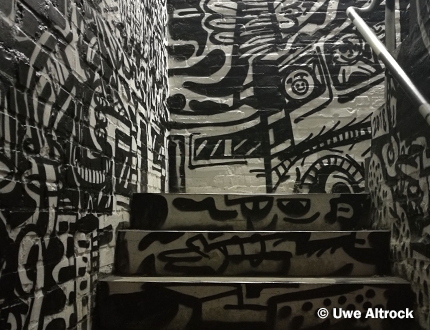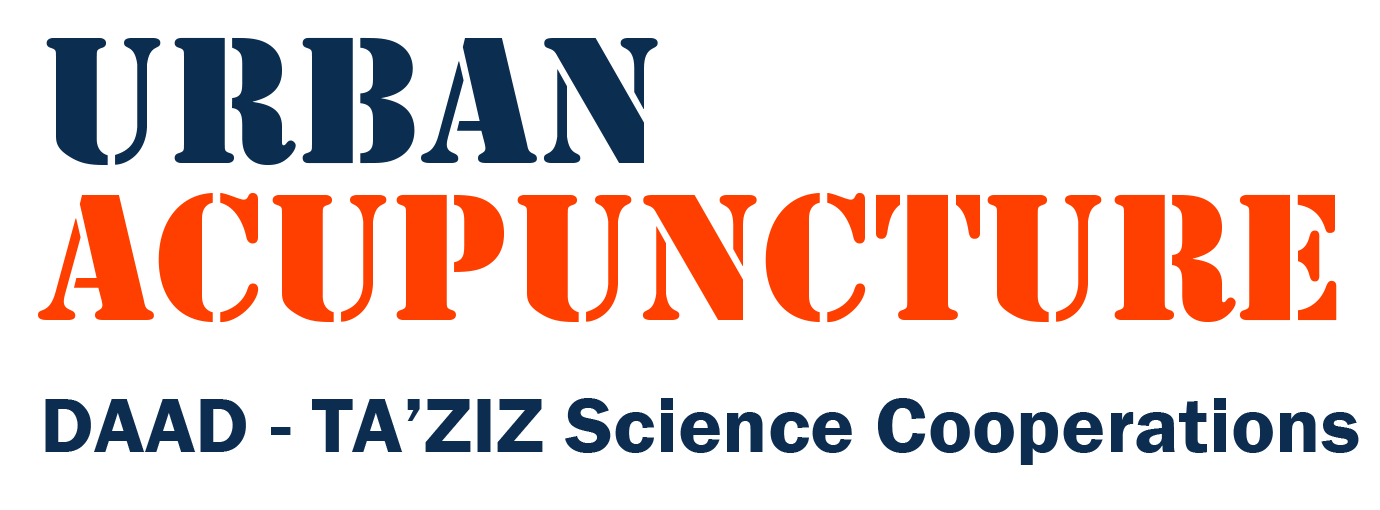
Name :
Urban Acupuncture: Berlin From A Different Perspective
Duration:
07. December 2023 - 11. December 2023
Location:
Humboldt University of Berlin
Urban Acupuncture: Berlin From A Different Perspective
Discover Berlin through the lens of Urban Acupuncture, a fascinating approach that unveils the city's heartbeat from a unique vantage point. Explore the tapestry of Berlin's neighborhoods, each intricately woven with cultural diversity, historical significance, and architectural marvels. From the vibrant street art adorning alleyways to the innovative urban planning initiatives revitalizing forgotten spaces, this perspective offers an intimate look at how small interventions can create profound impacts in the urban fabric. Immerse yourself in the pulsating energy of Berlin, where Urban Acupuncture transforms the city into a canvas of creativity, resilience, and constant evolution, inviting you to experience its hidden gems and reimagine its narrative.
Program:
Day 1 – 08. Dec. 2023:
During the first day of the workshop, participants will visit a couple of projects and initiatives entailing the concept of urban acupuncture. Those projects and initiatives were carefully selected to reflect various interpretations for urban acupuncture:
- Testfeld Reallabor Radbahn: The concept of the Radbahn pursues the idea of an urban development with bicycle infrastructure under and along the largely forgotten space of the listed elevated viaduct of Berlin's subway line 1. The Radbahn creates an urban open space. As a multicolored bicycle park, it offers a place to take a breath in the hustle and bustle of the city. Here, people have the chance to enjoy riding their bikes, take a walk or a rest and playfully engage with urban space. Along the Radbahn, people will feel a sense of deceleration and get through the city with joy.1
- Tempelhofer Feld: “Welcome to the Tempelhof Field, one of the largest urban open spaces in the world!” In the past, this was the site of airplane takeoffs, engines roaring and the smell of kerosene. Today, inline skates roll over the smooth asphalt, the twittering of the rare skylark fills the air, people meet on the meadows to party and relax. Since the former runways and adjacent green spaces were opened for recreational use in May 2010, an oasis for people, animals and plants has emerged in the middle of the capital. The 300-hectare area could easily fit 420 soccer fields, but since that would really be a bit monotonous, everything that's fun is allowed on the Tempelhof Field: Picnicking, gardening, cycling – or just lying in the grass and realizing that freedom can be limitless even under the clouds.2
- Prinzessinnengarten (Princesses' Garden): is a community garden and urban farming project located in the Kreuzberg and Neukölln districts. It stands as a symbol of sustainability, community engagement, and green activism within the city. This unique garden was established in 2009 on a previously vacant lot, transformed by local activists and volunteers into a thriving urban oasis. The space promotes organic gardening, biodiversity, and environmental education, serving as a platform for workshops, events, and educational programs focused on sustainable living practices.3
- Urban Nations Museum: URBAN NATION and the URBAN NATION Museum is an initiative of the non-profit Foundation Berliner Leben, which was founded by Gewobag AG. The work of URBAN NATION is intended to promote creative exchange between artists and Berliners, and to support integration and participation through cultural education programs in Berlin’s neighborhoods.4
- Haus der Statistik: is a post-war modernism icon. However, the area’s invisible past, which was bombed and then bulldozed to make way for the current complex, is nearly forgotten. Prior to WWII, a small-scale neighborhood, including a Jewish senior home, stood where Haus der Statistik buzzes with creative and future-oriented energy. In autumn 2015, the Berlin Senate organized a workshop for the reassessment of Alexanderplatz. In this context, the Haus der Statistik initiative was formed, an alliance of various Berlin actors: social and cultural institutions and associations, artist collectives, architects, foundations, and clubs. The initiative developed a concept that envisaged converting and expanding the building complex into affordable housing (including for refugees) as well as spaces for art, culture, social affairs, and education.5
- Holzmarkt: is a multi-faceted project in Berlin that emerged from a community initiative. It's a unique blend of cultural, social, and entrepreneurial endeavors situated on the banks of the Spree River. Holzmarkt originated from the legendary Bar25 and KaterHolzig, two beloved nightlife venues in Berlin that closed in 2010 and 2013, respectively.6
Day 2 – 09. Dec. 2023:
Participants will be divided into two groups, one including PhD and Master candidates from Egypt, Lebanon, and Iraq, where they will focus on enhancing their research abstracts. While the other is formed of Kasseler Students, where they will work on enhancing their urban acupuncture design projects. The first group will receive two inputs on two consecutive days. The first input by Prof. Dr.-Ing. Uwe Altrock – Universität Kassel, regarding Academic Writing. The input will focus on the main key features of academic writing; formal tone, logical structure, evidence-based arguments, specialized vocabulary, critical analysis, and audience consideration. In addition, it will highlight the common problems that scholars usually face regarding academic writing. The latter group – Kasseler Students, will work in a compact workshop format to enhance their design ideas and concepts. They will make use of the case studies visited o the first day to better formulate their ideas and make them more vibrant.
Day 3 – 10. Dec. 2023:
This is the presentation day for both tracks. In addition, the PhD and Master candidates will receive their second input by Dr. Arvid Krüger – Universität Kassel, regarding Research Methodology and Data Validation. Where he will focus on the process of planning, conducting, and analyzing research. The participants will learn research design process, research methodology selection, data collection methods. Moreover, they will learn various methods of validating the collected data.
After the presentations, the whole team will visit “The Great Repair Exhibition” at the Akademie der Künste. The exhibition project “The Great Repair” discusses contradictions between growth and ecology based on architecture’s material culture. It presents more than 40 positions from art, architecture, and spatial practices in which repair becomes a new design paradigm. In the arts and in the cultural and social sciences, there are increasing calls for new strategies to reduce resource consumption and preserve and repair what already exists. The exhibition examines to what extent repair politics and aesthetics from a decolonial, feminist, and posthuman perspective can be a meaningful alternative. Sufficiency, longevity, solidarity, reappropriation, plurality, and care work are explored as politics of a repair society.7
Day 4 – 11. Dec. 2023:
This day is dedicated for a second-round tour in Berlin as well as visiting two architectural/urban design offices in Berlin. Our tour will start with the Ziegenhof and Horstplatz in Charlottenburg, where we will see a video on this initiative followed by a guided round tour in the project location. The Ziegenhof in Charlottenburg is a very popular meeting place for children and adults from all over the city. The Ziegenhof is one of the most used green and recreational areas in Charlottenburg, as it is a very popular meeting place for children and adults from the neighborhood on Klausenerplatz. However, the Ziegenhof also attracts visitors from other parts of the city as an excursion destination.
Afterwards we will visit two architectural/urban design offices in Berlin, where Prof. Markus Bader from raumlaborberlin and Dr. Sonja Beeck from Chezweitz GmbH will present parts of the successful stories and projects that their offices realized over the past years.
- raumlaborberlin: There was once a society that believed the future would bring better living conditions to everyone. There were people, utopian thinkers, who thought about the big questions of the city. Today only a feeling remains, half desire, half melancholy, reminiscing of those architects who wanted to live in a better society and who had dreamed of better places. Such an era is now over. raumlaborberlin is a network, a collective of 9 trained architects who have come together in a collaborative work-structure. They work at the intersection of architecture, city planning, art, and urban intervention. They address in their work city and urban renewal as a process. We are attracted to difficult urban locations. Places torn between different systems, time periods or planning ideologies, that cannot adapt. Places that are abandoned, left over or in transition that contains some relevance for the processes of urban transformations. These places are our experimentation sites. They offer untapped potential which we try to activate. This opens new perspectives for alternative usage patterns, collective ideals, urban diversity, and difference.8
- Chezweitz GmbH: Since 2000, the scenography office Chezweitz has been translating ideas and content into spaces on an international level. It designs art and themed exhibitions, generates astonishing reactions through artistic interventions in urban spaces and through specially developed means of communication, both museum and urban. The credo of architects Sonja Beeck and Detlef Weitz is clear and to the point: The unconditional unity of architecture, story and narrative style is what makes excellent scenography.9
References:
1 https://www.radbahn.berlin/en
2 https://www.thf-berlin.de/en/location/tempelhof-field
3 https://prinzessinnengarten.net/wir/
4 https://urban-nation.com/about-us/urban-nation-museum/
5 https://hausderstatistik.org/unterstuetzen/das-konzept-zum-download/
6 https://www.holzmarkt.com/ueber-den-holzmarkt
7 https://www.adk.de/en/programme/?we_objectID=65647
